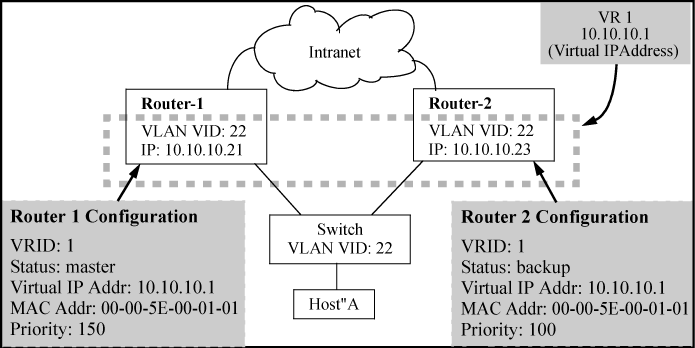Dynamically changing the priority of the VR
The dynamic priority change feature provides the ability to dynamically change the priority of the virtual router (VR) when certain events occur. The backup VR releases VIP control by reducing its priority when tracked entities such as ports, trunks, or VLANs go down. You can also force the backup to take ownership of the VR if you have previously caused it to release control.
In normal VRRP operation, one router (Router-1) is in the master state and one router (Router-2) is in the backup state. Router-1 provides the default gateway for the host. If Router-1 goes down for any reason, the backup router, Router-2, provides the default gateway for the host.

If all the tracked entities configured on Router-1 go down, Router-1 begins sending advertisements with a priority of zero. This causes Router-2 to take control of the virtual IP.
Any applications or routing protocols, such as RIP or OSPF, on Router-1 that were using its IP address are no longer able to use that IP interface. Router-1 does not respond to any ARP requests for that IP address. Router-2 takes control of the IP address and responds to ARP requests for it with the virtual MAC address that corresponds to VRID-1.
A backup VR switches to priority zero instead of its configured value when all of its tracked entities go down. An owner VR always uses priority 255 and never relinquishes control voluntarily.